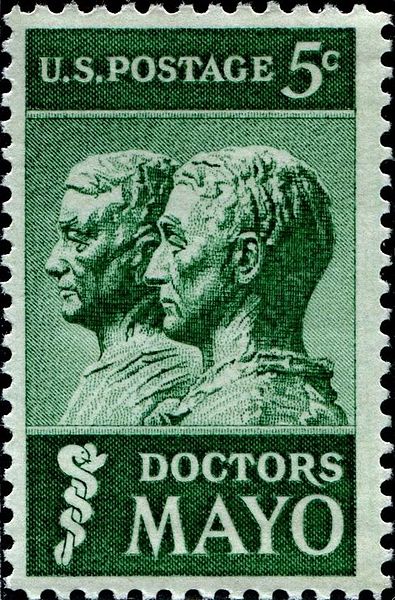On August 21, 1883, a devastating tornado affected southeastern portions—the Driftless Area—of the U.S. state of Minnesota. The massive tornado, retrospectively estimated to have been an F5 on the modern Fujita scale, caused at least 37 deaths and over 200 injuries. The tornado was part of a tornado family, a series of tornadoes produced by a supercell, that included at least two significant tornadoes across Southeast Minnesota on August 21. A third significant tornado occurred two hours before the main event hit Rochester. The Rochester tornado indirectly led to the formation of Saint Mary's Hospital, now part of the Mayo Clinic. The tornado closely followed destructive tornadoes a month earlier in the same area: on July 21, two significant, deadly tornadoes hit the area, including an F4 tornado family that killed four people in Dodge and Olmsted Counties, especially near Dodge Center.
Damage from the F5 tornado that struck Rochester, Minnesota
Mayo Clinic is a nonprofit American academic medical center focused on integrated health care, education, and research. It employs over 7,300 physicians and scientists, along with another 66,000 administrative and allied health staff, across three major campuses: Rochester, Minnesota; Jacksonville, Florida; and Phoenix/Scottsdale, Arizona. The practice specializes in treating difficult cases through tertiary care and destination medicine. It is home to the top-15 ranked Mayo Clinic Alix School of Medicine in addition to many of the highest regarded residency education programs in the United States. It spends over $660 million a year on research and has more than 3,000 full-time research personnel.
William Worrall Mayo, founder of Mayo Clinic
St. Mary's Hospital in 1910
Mayo Brothers U.S. Commemorative Stamp issued 1964
Plummer Building in Rochester, Minnesota





